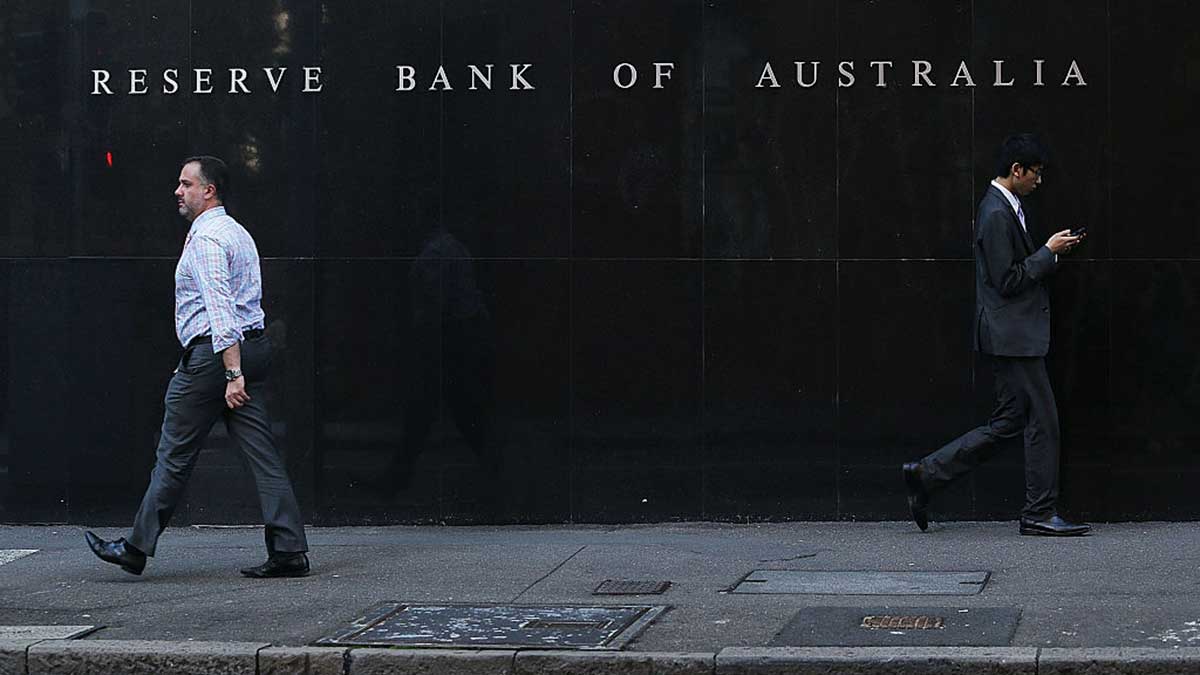RBA: There are good signs in the economy but still no interest rate hike ’til 2024

If the latest round of lockdowns weren’t enough of a reminder that Australia’s not out of the woods with COVID-19 yet, the RBA’s latest monetary policy statement was.
But by the same token, it was also far from doom and gloom.
Record low interest rates have been one of many measures utilised by central banks to repair the economy, with others in Australia including the bond buying program and the Term Funding Facility (TFF).
In a statement the RBA said the economy was in better shape than just over 12 months ago, but still had some way to go.
It noted the quick recovery of the labour market and financial conditions even amidst the recent lockdowns as well as the booming housing market.
But on the other hand it noted inflation and wage outcomes remained subdued.
It said all of its the measures would provide continuing monetary support the economy needed as it transitioned from the recovery phase to the expansion phase.
Bond buying program continuing until November
One hint the RBA was now more bullish on the economy was proceeding with the end of the TFF last month.
Today it also the bond buying program would begin to be cut.
While it would continue to buy $4 billion in bonds a week until at least mid November at that point it would “conduct a further review” – hinting at a further cutback or even potentially stopping it altogether.
“The bond purchase program is playing an important role in supporting the Australian economy,” it said.
“The Bank will continue to purchase bonds given that we remain some distance from the inflation and employment objectives.
“However, the Board is responding to the stronger-than-expected economic recovery and the improved outlook by adjusting the weekly amount purchased.
“It will conduct a further review in November, allowing the Board to respond to the state of the economy at that time.”
RBA says no interest rate hike until inflation hits 3%
As for interest rates, it stood with its target of when inflation hit 3 per cent and this is not expected until 2024.
“While a pick-up in inflation and wages growth is expected, it is likely to be only gradual and modest,” it said.
“The Board remains committed to maintaining highly supportive monetary conditions to support a return to full employment in Australia and inflation consistent with the target.
“It will not increase the cash rate until actual inflation is sustainably within the 2 to 3 per cent target range.
“The Bank’s central scenario for the economy is that this condition will not be met before 2024.
“Meeting it will require the labour market to be tight enough to generate wages growth that is materially higher than it is currently.”
Despite the unemployment rate recovering, the bank noted this was affected by international border closures just as much as the domestic economic recovery.
What does the RBA’s current stance mean for markets?
At first glance investors might think this would kill off speculation that interest rates might rise sooner than 2024.
But this does not completely rule out the prospect of markets declining.
Morningstar released its equity market outlook yesterday in which it echoed similar sentiments to those expressed by the RBA about the broader economy.
While it was released prior to the announcement, it took into account the RBA’s previously iterated position on an interest rate hike of “not before 2024”.
“We think the latest June 2021 lockdowns are unlikely to materially derail Australia’s strong economic recovery,” the report, authored by analysts Gareth James and Matthew Hodge, said.
“COVID-19 cases remain relatively low in Australia, and despite flare ups, we think it’s likely they will be controlled, while increasing vaccination rates are a longer-term tailwind for the recovery.”
Nevertheless it warned the equity market had already priced in much of the good news.
It sees the market as 15 per cent overvalued on average, with tech being the most overvalued and energy as the only undervalued sector.
“Low interest rates and low returns on other asset classes in general mean the opportunity cost to hold equities is lower,” it said.
“The relative return for equities appears more attractive–even though earnings yields have compressed and P/E ratios expanded.
“This may prove appropriate in hindsight if interest rates remain low for the long term.
“However, we continue to caution that the equity market as a whole looks overvalued currently and that investors should be particularly selective when deploying new capital into the stock market.”
Related Topics
UNLOCK INSIGHTS
Discover the untold stories of emerging ASX stocks.
Daily news and expert analysis, it's free to subscribe.
By proceeding, you confirm you understand that we handle personal information in accordance with our Privacy Policy.








